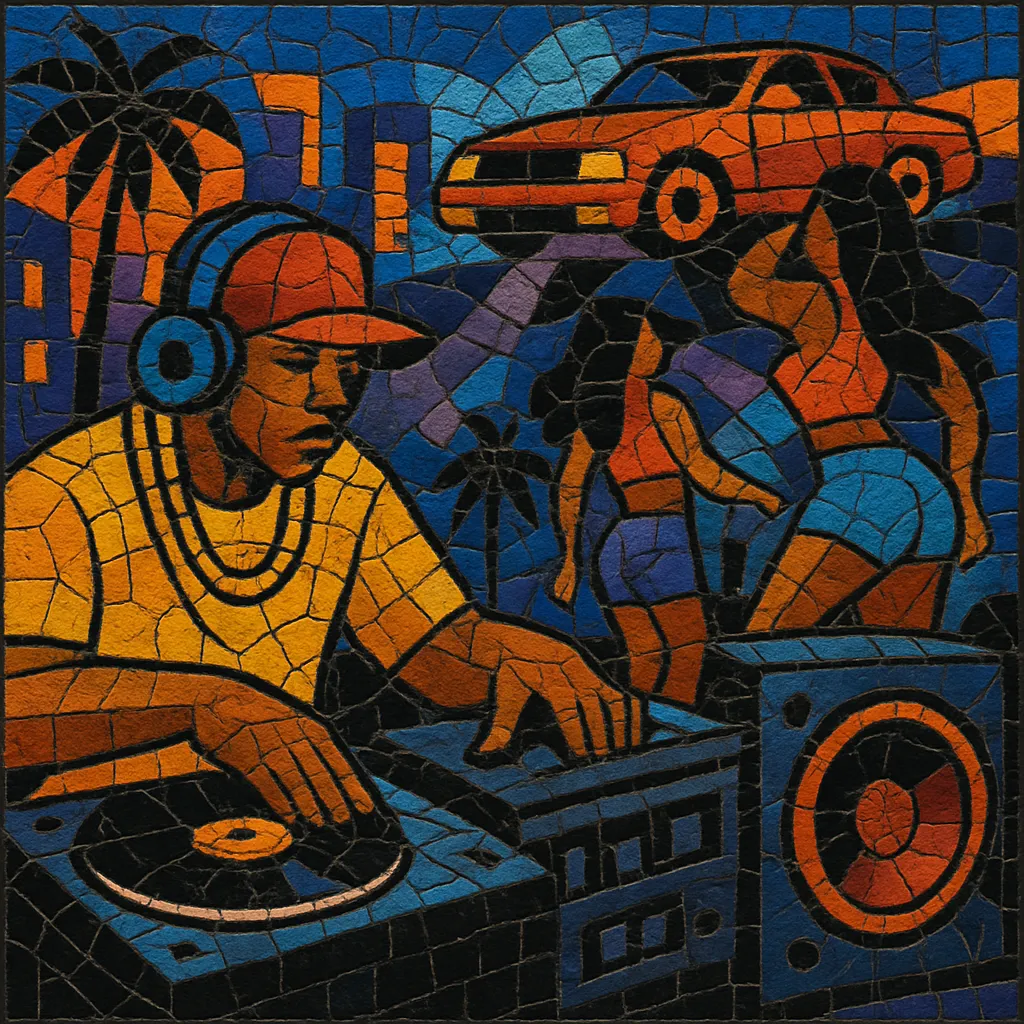
Miami bass is a high-energy, bass-forward hip hop and electro offshoot that emerged in South Florida during the mid-to-late 1980s. It is defined by booming TR-808 sub-bass, crisp handclaps and snares, uptempo breakbeats, and chant-like vocals that favor call-and-response hooks over dense lyricism.
Often nicknamed "booty bass," the style prioritizes dancefloor function and car-audio impact, with many tracks effectively serving as "bass tests" for subwoofers. Melodic and harmonic elements are sparse and repetitive, while the rhythmic programming and low-end power drive the music’s party-centric atmosphere.
Miami bass grew out of the convergence of early hip hop and electro in South Florida, where DJs and producers embraced the TR-808’s booming kick and syncopated, dance-oriented breakbeats. Local crews and producers began emphasizing extreme low frequencies and simple, chantable hooks designed for clubs, skating rinks, and car-audio culture. Acts like M.C. A.D.E., Maggotron, and Dynamix II helped codify the sound with drum-machine-led tracks that put sub-bass at the center.
The 2 Live Crew brought the style nationwide with provocative, party-focused records and anthemic hooks. Their success—and the explicit lyrical content—sparked landmark obscenity trials that, paradoxically, amplified attention to the scene. Meanwhile, Gucci Crew II, Poison Clan, Afro-Rican, and others expanded the sound across Miami and greater Florida, while Orlando-based DJ Magic Mike popularized a closely related Florida bass wave with bass-showcase productions.
As the 1990s progressed, Miami bass became synonymous with car-audio demonstrations, inspiring specialized “bass CDs” from artists like Bass 305 and Bass Mekanik. The style’s minimalist harmony, heavy 808 programming, and chant vocals proved highly portable, influencing club scenes beyond Florida. Its stripped-back, bass-first ethos resonated with dancers and DJs who valued physical impact and rhythmic clarity.
Although mainstream chart presence faded, Miami bass continued to shape Southern hip hop aesthetics and informed later styles such as Baltimore club, ghetto house, ghettotech, New Orleans bounce, and Brazil’s funk carioca. Periodic revivals and retrospectives highlight its enduring engineering influence (sub-bass emphasis, 808 programming) and its role as a foundational template for bass-driven dance music around the world.

